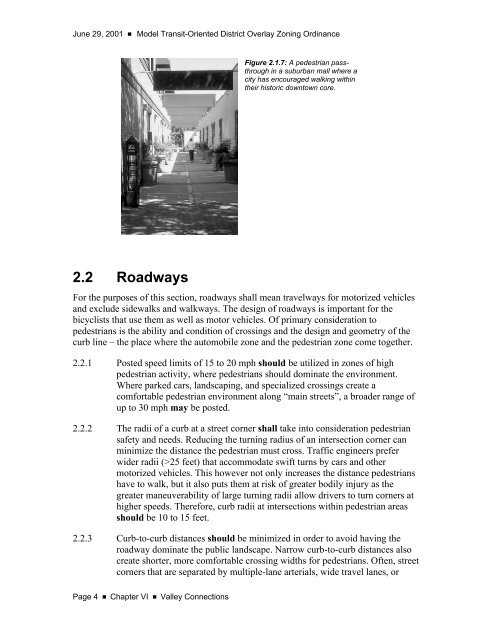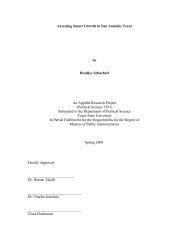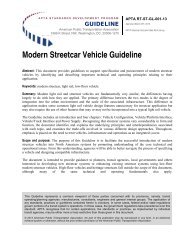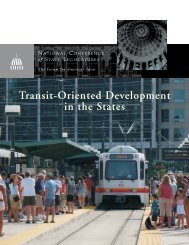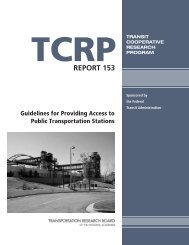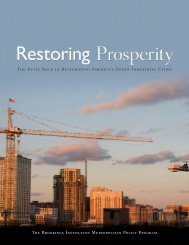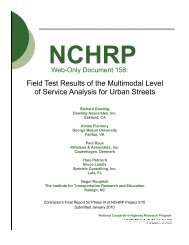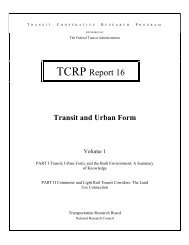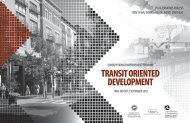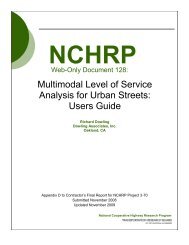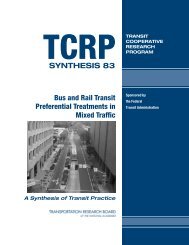Model TOD Zoning Ordinance (PDF, 3.7 MB) - Reconnecting America
Model TOD Zoning Ordinance (PDF, 3.7 MB) - Reconnecting America
Model TOD Zoning Ordinance (PDF, 3.7 MB) - Reconnecting America
Create successful ePaper yourself
Turn your PDF publications into a flip-book with our unique Google optimized e-Paper software.
June 29, 2001 ■<strong>Model</strong> Transit-Oriented District Overlay <strong>Zoning</strong> <strong>Ordinance</strong>Figure 2.1.7: A pedestrian passthroughin a suburban mall where acity has encouraged walking withintheir historic downtown core.2.2 RoadwaysFor the purposes of this section, roadways shall mean travelways for motorized vehiclesand exclude sidewalks and walkways. The design of roadways is important for thebicyclists that use them as well as motor vehicles. Of primary consideration topedestrians is the ability and condition of crossings and the design and geometry of thecurb line – the place where the automobile zone and the pedestrian zone come together.2.2.1 Posted speed limits of 15 to 20 mph should be utilized in zones of highpedestrian activity, where pedestrians should dominate the environment.Where parked cars, landscaping, and specialized crossings create acomfortable pedestrian environment along “main streets”, a broader range ofup to 30 mph may be posted.2.2.2 The radii of a curb at a street corner shall take into consideration pedestriansafety and needs. Reducing the turning radius of an intersection corner canminimize the distance the pedestrian must cross. Traffic engineers preferwider radii (>25 feet) that accommodate swift turns by cars and othermotorized vehicles. This however not only increases the distance pedestrianshave to walk, but it also puts them at risk of greater bodily injury as thegreater maneuverability of large turning radii allow drivers to turn corners athigher speeds. Therefore, curb radii at intersections within pedestrian areasshould be 10 to 15 feet.2.2.3 Curb-to-curb distances should be minimized in order to avoid having theroadway dominate the public landscape. Narrow curb-to-curb distances alsocreate shorter, more comfortable crossing widths for pedestrians. Often, streetcorners that are separated by multiple-lane arterials, wide travel lanes, orPage 4 ■ Chapter VI ■ Valley Connections


